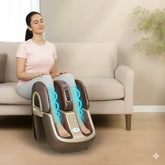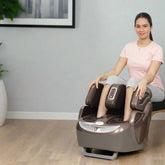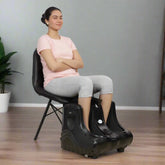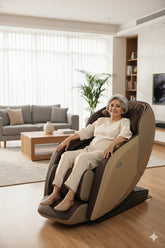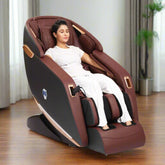Backache is one of the most common issues people face today, no matter their age or lifestyle. It can sneak up on you after sitting at a desk for hours, carrying something heavy, or even from everyday habits like slouching. In some cases, it’s tied to conditions such as arthritis or a slipped disc. Whatever the reason, back pain has a way of making daily life more difficult, whether it’s focusing at work, staying active, or simply moving around comfortably.
That’s where a back support belt can make a real difference. By giving your back the support it actually needs, easing strain, and encouraging better posture, these belts can help reduce discomfort and make everyday movements a lot easier. Of course, not every belt is the same. Finding one that fits your specific pain and matches your lifestyle is the key to getting real relief.
Understanding Back Pain

Back pain occurs whenever muscles, ligaments, or even discs supporting the spine become strained or irritated. This pain can result from poor posture, prolonged sitting, lifting heavy objects incorrectly, or sometimes underlying medical conditions like herniated discs or arthritis.
You may feel this pain in different areas, like the lower back, upper back, or sometimes along the spine, and it may vary in intensity from mild stiffness to severe discomfort. So, recognizing the type and cause of pain is truly essential, as this actually determines whether a back pain belt or other treatment will provide the most effective support.
Types of Back Pain
Back pain is not one-size-fits-all. Common types include:
- Acute back pain: This is the sudden pain that’s mostly caused by an injury or strain, and it’s usually short-term.
- Chronic back pain: This is the persistent pain that lasts for weeks or sometimes months, and it's mostly linked to some conditions like arthritis or disc problems.
- Muscle-related pain: It results from overuse, poor posture, or even weak core muscles.
- Nerve-related pain: Sharp, tingling, or radiating pain due to compression of a nerve, like sciatica.
When you properly know your pain type, it helps determine which back support belt or even posture aid will be exactly effective for you.
When to Use a Back Belt
A belt for back pain can provide proper support, reduce strain, and improve posture; however, it’s not meant to replace medical care. You can consider using one if:
- You have mild to moderate lower back pain.
- Your daily activities involve lifting or prolonged sitting.
- You need extra spinal support during recovery.
- You want to prevent poor posture from turning into pain.
Types of Back Belts
Choosing the right back pain belt actually depends on your pain type, support level, and daily activities. Here, each belt serves a specific purpose, from posture improvement to severe pain relief.
1. Lumbar Support Belts
A Lumbar Support Belt actually wraps around the lower back in order to provide firm support, relieve mild to moderate pain, correct your bad posture, and stabilize muscles and ligaments during your daily activities.
- Provide support to lower back: These belts properly stabilize the lumbar region, reduce pressure on muscles and ligaments, and also make daily movement even more comfortable, effectively helping with lower back pain.
- Best for posture correction and mild to moderate pain: Perfect for office workers or all those who sit for long hours, lumbar belts truly encourage upright posture, relieve tension, and support your natural movement without even being restrictive.
2. Elastic/Compression Belts
An Elastic or Compression Belt is flexible and adjustable. It offers gentle support to the mid or lower back. It reduces strain during movement, lifting, or even prolonged sitting.
- Flexible and adjustable: Stretchable materials allow the belt to conform to your body for a better fit. Moreover, adjustable straps actually ensure personalized comfort, and this makes it a versatile back support belt.
- Suitable for everyday use and lifting activities: Furthermore, these belts reduce the strain during daily tasks, gym sessions, or even light lifting. It also helps prevent pain flare-ups and improve stability without even restricting mobility.
3. Rigid or Brace Belts
When it comes to a Rigid or Brace Belt, it uses firm material in order to stabilize the spine, restrict motion, and ultimately provide strong support. It’s always recommended for severe pain or post-surgery recovery.
- Stronger support, often recommended post-surgery or for severe pain: These are actually made from solid materials, and these belts stabilize the spine, limit movement, and protect your muscles and discs. They are a really great solution for pain or post-operative use.
4. Posture Corrector Belts
A posture corrector belt gently aligns the spine and shoulders, encourages upright posture, reduces slouching, and ultimately prevents discomfort that’s caused by long hours of sitting or poor posture habits.
- Helps with spinal alignment: These belts actually support proper posture as they gently adjust spinal alignment and ease tension on muscles and ligaments.
- Works for office workers and sedentary lifestyle: Desk-bound individuals can choose it, as this posture corrector belt prevents posture-related pain and complements exercises that strengthen core and back muscles.
Confused which Back Support Belt is right for you?
Get Free Expert Advice Today!
Key Features to Look For
When choosing the best back support belt, these features matter most:
- Adjustable Fit: Straps or Velcro actually ensure a snug, comfortable fit for all body shapes.
- Breathable Material: Mesh or cotton fabrics perfectly prevent sweating and irritation during long wear.
- Support Level: Always choose mild, moderate, or even firm support based on pain severity and activity.
- Durability: High-quality material perfectly maintains shape and provides you with consistent support over time.
- Ease of Use: Choose a lightweight and simple closure, as it makes the belt practical for daily wear.
How to Choose the Best Belt for Your Back Pain
It’s really important to choose the right back pain belt. This is because it’s essential for comfort, relief, and long-term support. As we discussed earlier, you need to consider your pain type, daily activities, and professional guidance in order to make the best choice. Here’s a detailed look at how to choose it:
- Identify your pain area: lower, upper, or full back: Knowing if your discomfort is in the lower, mid, or even full back helps you select the belt that exactly targets the right area for maximum relief.
- Determine the intensity of support needed: When it comes to mild pain, it actually needs a flexible belt, whereas severe discomfort or post-surgery conditions always call for stronger, rigid belts for proper stabilization.
- Consider lifestyle: office work, sports, heavy lifting: We all know, our daily activities affect the belt type. So, choose lightweight belts for your office use, elastic belts for movement, or you can choose branches for heavy lifting or recovery.
- Consult with a doctor or physiotherapist if necessary: Always consult with a doctor for professional advice to ensure you choose a belt that is suited to your condition, and prevent misuse, worsening of pain, or unnecessary restriction of movement.
Conclusion
When you choose the right back pain belt, it can make a noticeable difference in your daily comfort, posture, and mobility. No matter if you need a lumbar support belt for mild lower back pain, an elastic belt for your everyday activities, or even a rigid brace for severe discomfort, understanding your actual need is truly key.
At JSB Healthcare, we provide carefully selected back pain support belts that are truly designed for effectiveness and comfort. You can explore our collection to find the belt that perfectly fits your lifestyle and keeps your back supported, so that you can move freely with less pain.

